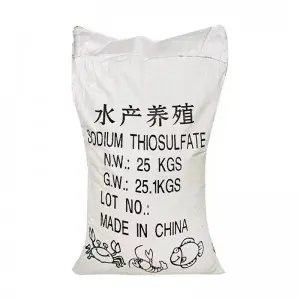



Understanding Standardized Sodium Hydroxide in Titration and Laboratory Applications
Understanding Standardized Sodium Hydroxide An Essential Chemical in Analytical Chemistry
Sodium hydroxide (NaOH), commonly referred to as caustic soda or lye, is a powerful alkaline compound known for its use in various industrial and laboratory applications. One of the most critical aspects of working with sodium hydroxide in analytical chemistry is the process of standardization. Standardized sodium hydroxide solutions are essential for accurate titration methods, which are fundamental in quantitative analysis.
What is Standardization?
Standardization refers to the process of determining the precise concentration of a solution. In the case of sodium hydroxide, the primary goal is to produce a solution with a known molarity, allowing for accurate measurements when it is used in titrations. Titrations are analytical procedures where a solution of known concentration (the titrant) is used to determine the concentration of an unknown solution (the analyte). For example, standardized sodium hydroxide might be used to titrate an acid to ascertain its concentration.
Why is Standardization Necessary?
Sodium hydroxide is hygroscopic, meaning it can absorb water from the atmosphere. This property leads to variations in its concentration over time, making it crucial to standardize the NaOH solution before using it in analytical procedures. Without standardization, the results of titrations would be unreliable. Furthermore, NaOH often reacts with carbon dioxide in the air to form sodium carbonate, which can also alter its effective concentration.
To ensure the reliability and accuracy of analytical results, laboratories must regularly standardize their sodium hydroxide solutions.
The Standardization Process
The standardization of sodium hydroxide involves titrating it against a primary standard, a substance of known purity and stability. A commonly used primary standard for this purpose is potassium hydrogen phthalate (KHP). The process typically involves the following steps
1. Preparation of Sodium Hydroxide Solution A weighed amount of NaOH is dissolved in distilled water to prepare a rough solution.
2. Preparation of KHP Solution An accurate mass of KHP is weighed and dissolved in distilled water. The solution’s molarity is calculated based on the mass of KHP used.
standardized sodium hydroxide

3. Titration A burette is filled with the NaOH solution, and a measured volume of KHP solution is placed into an Erlenmeyer flask. An appropriate indicator, such as phenolphthalein, is added to the KHP solution. The NaOH solution is gradually added until the endpoint is reached, indicated by a color change.
4. Calculating Concentration Using the volume of NaOH used in the titration and the molarity of the KHP, the concentration of the NaOH solution can be calculated using stoichiometric relations.
The equation that governs this reaction is
\[ \text{KHP} + \text{NaOH} \rightarrow \text{NaKP} + \text{H}_2\text{O} \]
From this equation, one mole of KHP reacts with one mole of NaOH, allowing for straightforward calculations of concentration.
Applications of Standardized Sodium Hydroxide
Standardized sodium hydroxide is utilized in various applications across multiple fields. In academia and research, it plays a fundamental role in titrimetric analyses, helping to determine the concentrations of weak acids and bases in various samples—ranging from food products to pharmaceuticals. In industry, NaOH is inherent in processes such as soap making, biodiesel production, and the manufacture of paper and textiles.
Moreover, accurate measurements are vital in environmental chemistry, where standardized sodium hydroxide is used to analyze the alkalinity of water samples to assess water quality.
Conclusion
Standardized sodium hydroxide is a cornerstone of quantitative analysis in chemistry. Its ability to provide reliable and precise measurements through careful standardization enables chemists to perform accurate titrations, ensuring high-quality results across various applications. As fundamental as it is potent, sodium hydroxide continues to be an indispensable tool in both laboratory and industrial settings, underscoring the importance of meticulous chemical analysis in scientific advancement and safety.
-
Why Sodium Persulfate Is Everywhere NowNewsJul.07,2025
-
Why Polyacrylamide Is in High DemandNewsJul.07,2025
-
Understanding Paint Chemicals and Their ApplicationsNewsJul.07,2025
-
Smart Use Of Mining ChemicalsNewsJul.07,2025
-
Practical Uses of Potassium MonopersulfateNewsJul.07,2025
-
Agrochemicals In Real FarmingNewsJul.07,2025
-
Sodium Chlorite Hot UsesNewsJul.01,2025










